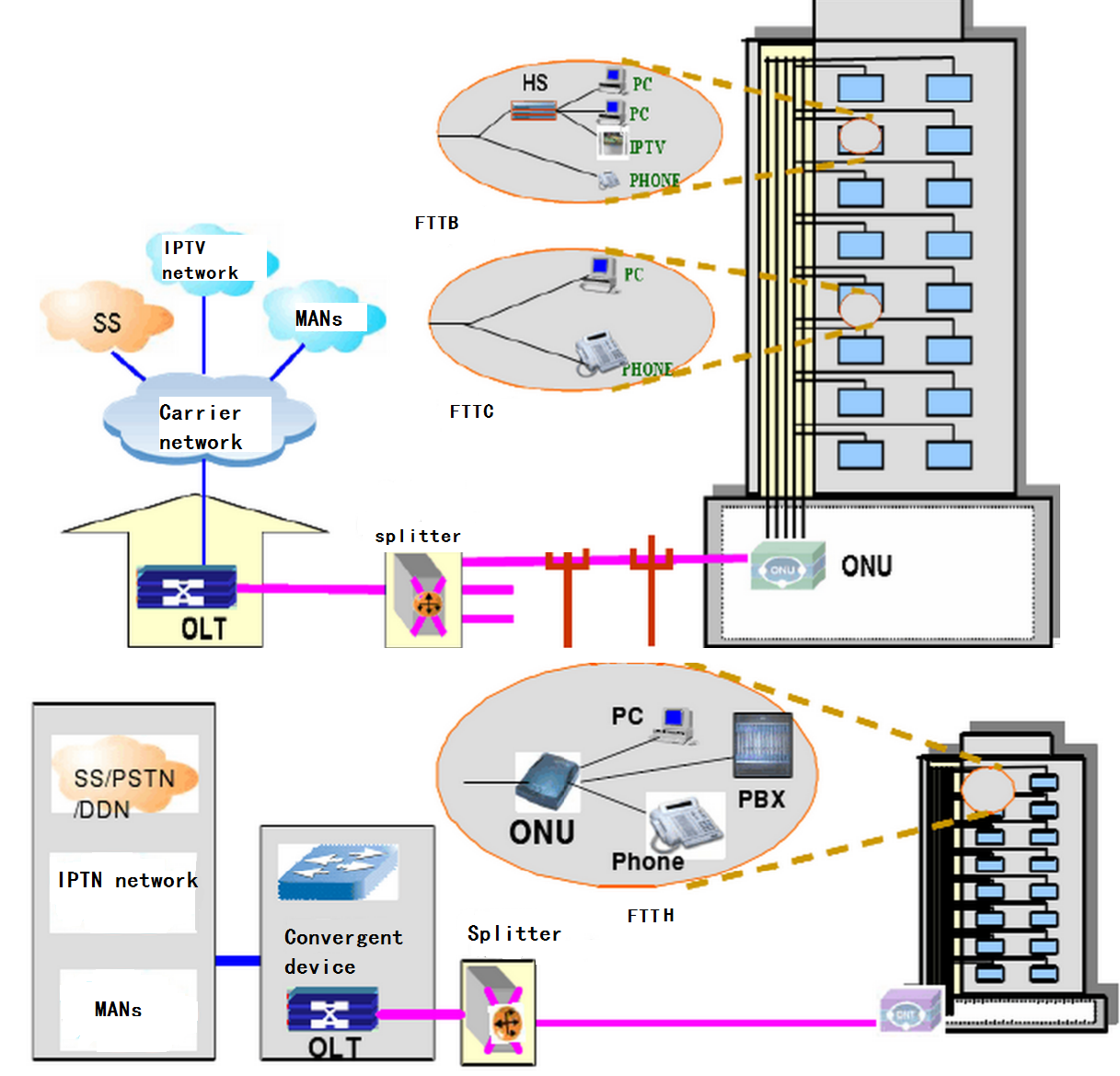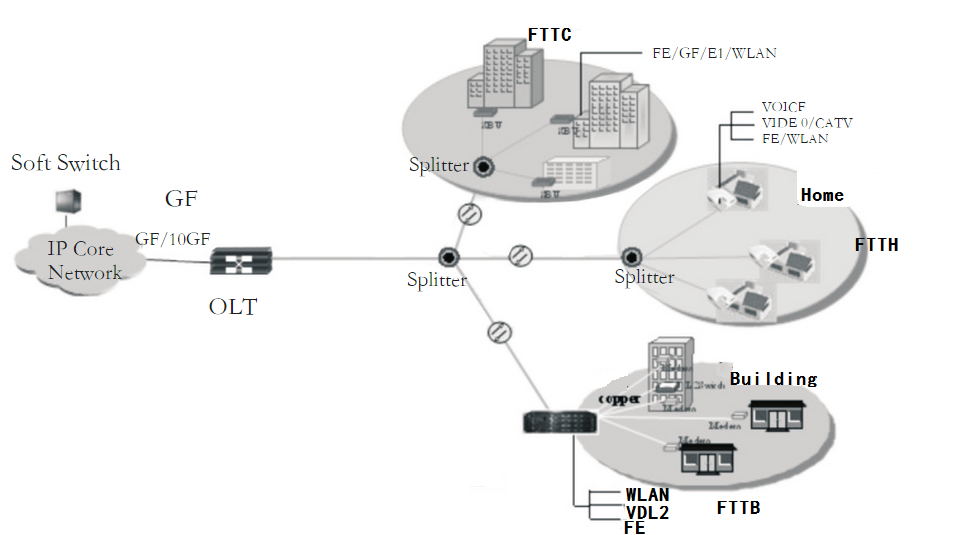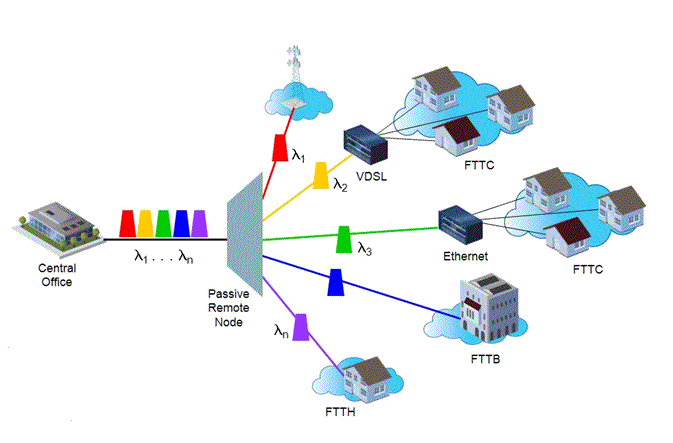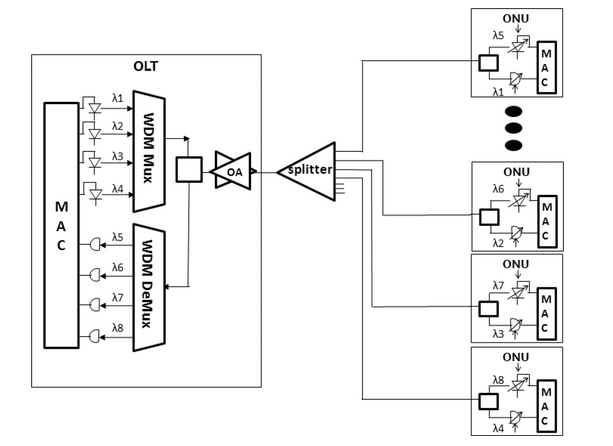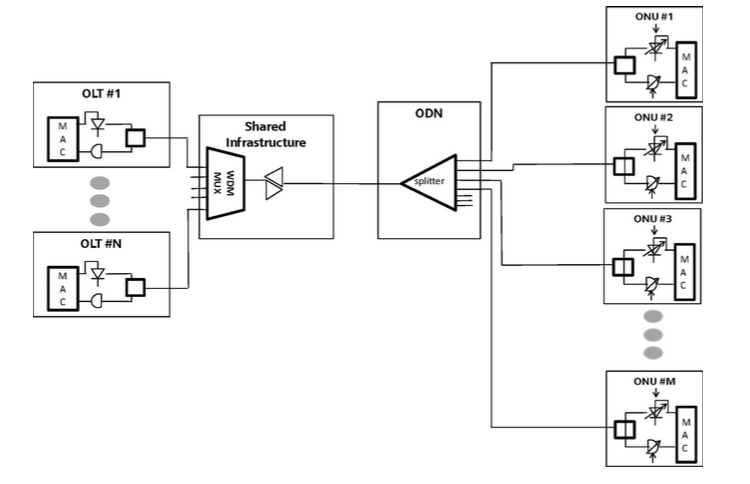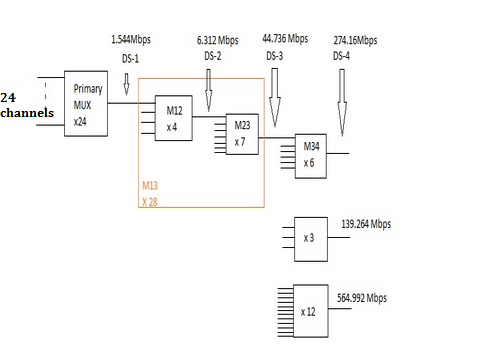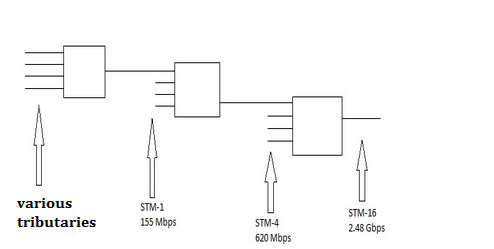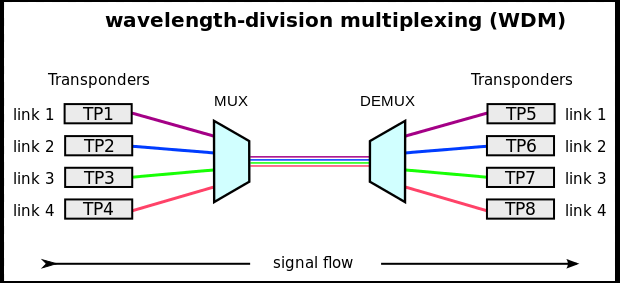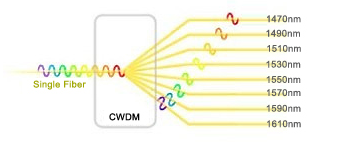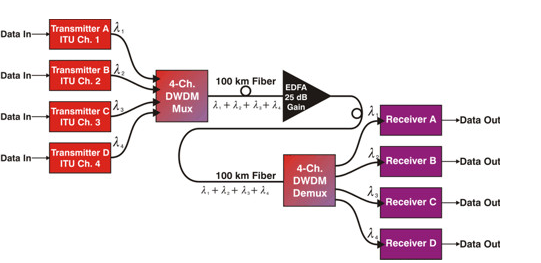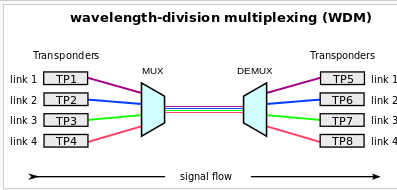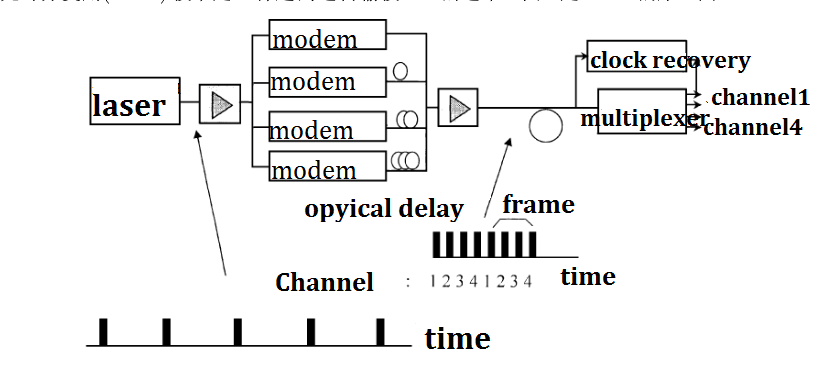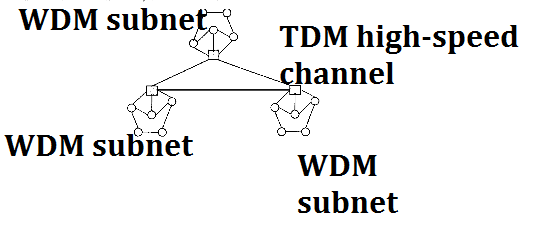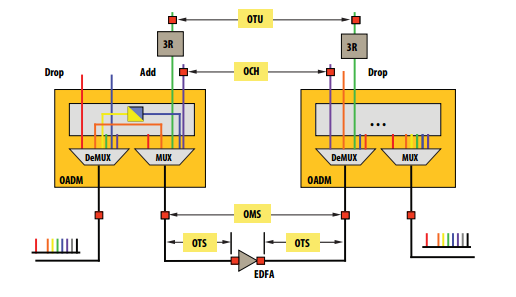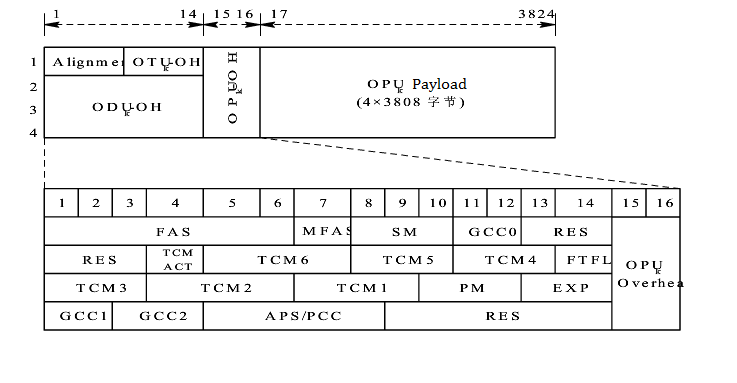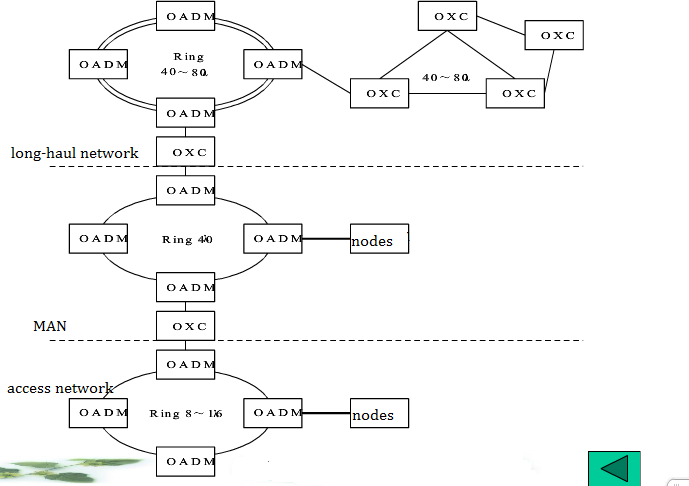1. Instruction
The bandwidth requirements of the telecommunication network users increased rapidly during the recent years. The emerging optical access network must provide the bandwidth demand for each user as well as support high data rate, broadband multiple services and flexible communications for various end-users. Being considered as a promising access network solution due to the high bandwidth provision and the low operation and maintenance cost, passive optical networks (PONs) represent one of the most attractive access network solutions. TDM and WDM techniques are employed in the PON for higher resource efficiency and capacity, which results in TDM-PON and WDM-PON respectively. TDM-PON provides much higher bandwidth for data application but it has limited availability to end-users. WDM PON can solve the problems encountered in TDM-PON by allocating a specified wavelength to each subscriber. This provides a separate, secure P2P, and high data-rate channel between each subscriber and the CO. This article is mainly written to give you a overview of the application of TDM-PON and WDM-PON as well as the joint application—TWDM PON.
2. Application of TDM-PON
TDM-PON types include ATM PON (APON), Broadband PON (BPON), Ethernet PON (EPON), Gigabit PON (GPON). Now EPON and GPON are extensively used in the telecommunication networks.
2.1 Application of EPON
Ethernet PON (EPON) is a PON-based network that carries data traffic encapsulated in Ethernet frames (defined in the IEEE 802.3 standard). A typical EPON system consists of three components: optical line terminal (OLT), optical network unit (ONU), and optical distribution network (ODN). Utilizing PON topological structure to achieve the access of Ethernet, EPON is equipped with the dual advantages of PON and Ethernet including low cost, high bandwidth, strong scalability, excellent compatibility with Ethernet to facilitate network management, etc. Based on where ONUs are deployed, EPON application mode can be fiber to the curb (FTTC), fiber to the building (FTTB), and fiber to the home (FTTH), as shown in Figure 1.
Figure 1: The application of EPON in FTTB, FTTC and FTTH
In a FTTC system, ONUs are deployed at roadside or beside the junction boxes of telegraph poles. Usually, twisted-pair copper wires are used to connect the ONUs to each user, and coaxial cables are used to transmit broadband graphic services. Currently, the FTTC technology is the most practical and economical Optical Access Network (OAN) solution for providing narrow-band services below 2 Mbps. For services integrating narrowband and broadband services, however, FTTC is not the ideal solution.
In a FTTB system, ONUs are deployed within buildings, with the optical fibers led into user homes through ADSL lines, cables, or LANs. Compared with FTTC, FTTB has a higher usage of optical fiber and therefore is more suitable for user communities that need narrowband/broadband integrated services.
In a FTTH system, ONUs are deployed in user offices or homes to implement a fully transparent optical network, with the ONUs independent of the transmission mode, bandwidth, wavelength, and transmission technology. Therefore, FTTH is ideal for the long term development of optical access networks.
2.2 Application of GPON
Gigabit PON (GPON) is the far-most advanced PON solution used by European and US providers. It is somehow based on the former ATM access networks (APON, BPON), but GPON’s data encapsulation (GEM) is more generic, and accepts different network protocols, such as ATM, Ethernet and IP. A traditional GPON system is made up of three parts: optical line terminal (OLT), optical network terminal (ONT) or ONU, and optical distribution network (ODU) composed of SM fiber and splitter. GPON possess the advantages of high bandwidth, high efficiency, large coverage, abundant user interfaces, etc. In the access network, GPON can be used to fiber to the building (FTTB), fiber to the curb (FTTC), and fiber to the home (FTTH), as shown in Figure 2.
Figure 2: The application of GPON in FTTB, FTTC and FTTH
In a FTTB system, ONTs are deployed within buildings. GPON can be used to serve for the users of multi-dwelling units (MDU) as well as business users. When serving for MDU users, the services supported by GPON contains asymmetric broadband services (digital broadcast, VOD, IP TV) and symmetric broadband services (content broadcast, e-mail, remote diagnose). When serving for business users, the services supported by GPON are symmetric services (group software, content broadcast, e-mail). Facing diverse services, GPON must flexibly provide private line service at different rate.
In a FTTC system, ONTs are deployed at roadside or beside the junction boxes of telegraph poles. The services supported by GPON consists of asymmetric services ( digital broadcast, VOD, IP TV, files downloading, online games) and symmetric services (content broadcast, e-mail, files interaction, remote education). In addition, GPON supported the expansion of the dedicated line POTS and ISDN.
In a FTTH system, ONTs are deployed in user offices or homes. GPON supports the asymmetric services and symmetric services. The asymmetric services include data broadcast, VOD, IP TV, files downloading, etc. The symmetric services include content broadcast, e-mail, files interaction, remote education, remote diagnose, online games, etc. What’s more, GPON supported the expansion of the dedicated line POTS and ISDN.
3. Application of WDM-PON
As the new-generation access network, WDM-PON makes it possible to transmit multiple wavelengths instead of one wavelength in the PON over the same fiber, thus greatly meet the bandwidth requirements of users. In addition to its efficient use of wavelengths, the WDM-PON also has advantages in its use of optical-transmission power. The network management is much simpler than a TDM-PON, and all future services can be delivered over a single network platform.
WDM-PON can be directly used to achieve FTTC, FTTB and FTTH (see Figure 3) and provide services for business subscribers, the single-family subscribers, the multi-family subscribers and other types subscribers at the same time. WDM-PON offer abundant bandwidth to better meet the bandwidth requirements of the back transmission of 3G and LTE base station, thus becoming the optimal technology for the back transmission of mobile station. WDM-PON also can be used to support reach extension and the transition of existing EPON networks to improve the scalability as well as protect the existing network investment. What’s more WDM-PON can also be adpoted to build the hybrid WDM-TDM PON which combines the dual advantages of TDM-PON and WDM-PON with TDM-PON to be better applied in the optical communication network and provide better services for subscribers. WDM-PON is very suitable for the application environment of telecommunication.
Figure 3: The application of WDM-PON in FTTC, FTTB and FTTH
4.Joint Application of TDM-PON and WDM-PON
The combination of TDM and WDM in a PON network could be the most cost effective way of introducing TDM/WDM PON into the access network, which brings TWDM-PON into being. Figure 4 shows the architecture of TWDM-PON . Four XG-PONs are stacked by using four pairs of wavelengths {(λ1, λ5), (λ2, λ6), (λ3, λ7), (λ4, λ8)}. For simple network deployment and inventory management purposes, the ONUs use colorless tunable transmitters and receivers. The transmitter is tunable to any of the upstream wavelengths, while the receiver can tune to any of the downstream ones. To achieve a power budget higher than that of XG-PON1, optical amplifiers are employed at the OLT side to boost the downstream signals as well as to pre-amplify the upstream signals. ODN remains passive since both the optical amplifier and WDM Mux/DeMux are placed at the OLT side. Taking the advantages of TDM-PON and WDM-PON and overcoming their shortcomings, TWDM-OPN can provide higher rates and bandwidth to better serve users.
Figure 4: The network architecture of TWDM-PON
TWDM-PONcould be applied in the following ways. The first one to consider is used for pay-as-you-grow provisioning. The TWDM-PON system could be deployed by starting with a single wavelength pair. It could be upgraded by adding new wavelength pairs to increase the system capacity. In this way, the operators can address the bandwidth growth demand by investing what is needed and expanding the future demand. Another application of TWDM-PON is for local loop unbundling (LLU). A TWDM-PON with multiple OLT arrangement is shown in Figure 5 for LLU. Each operator would have their own OLT, each of which would contain some set of wavelength channels. A wavelength-selective device would be used to multiplex the OLT ports onto a single fiber. The wavelength-selective device could be as simple as a filter-based demultiplexer, or it could be an arrayed waveguide router type of device. This scheme unbundles the shared infrastructure for multiple operators. It also offers the possibility of every operator’s OLT being the same (containing all the wavelengths), and a single operator could add OLT resources as they want. What’s more, TWDM-PON can applied in the above-mentioned ways of TDM-PON and WDM-PON being applied.
Figure 5: The application of TWDM-PON for LLU
5.Conclusion
TDM-PON and WDM-PON, as the popular optical access network , are extensively used in the communication networks. WDM-PON solves the problems of limited bandwidth to each subscriber, high transmission power and poor network security exsiting in TDM-PON, becoming the new-generation access network. However, the cost WDM-PON components are relatively high, which lessen its population. Nowadays the high-speed broadband penetration and ongoing growth of the Internet traffic among customers have been placing a huge bandwidth demand on the telecommunication network. TWDM-PON, combining the advantages of TDM-PON and WDM-PON, comes into being to become the far-most advanced PON. Being able to provide higher bandwidth, higher rates in downstream and upstream and competitive cost, TWDM-PON will plays a key role in the optical communication networks.

